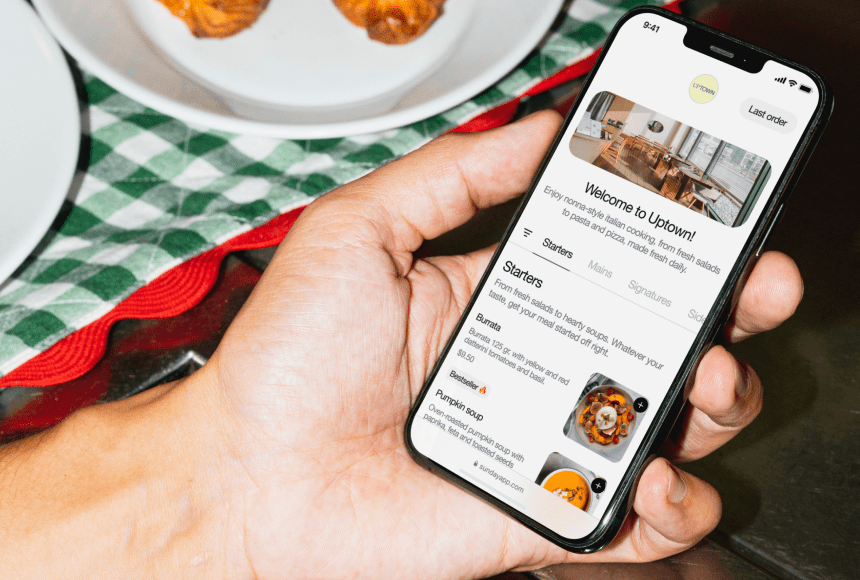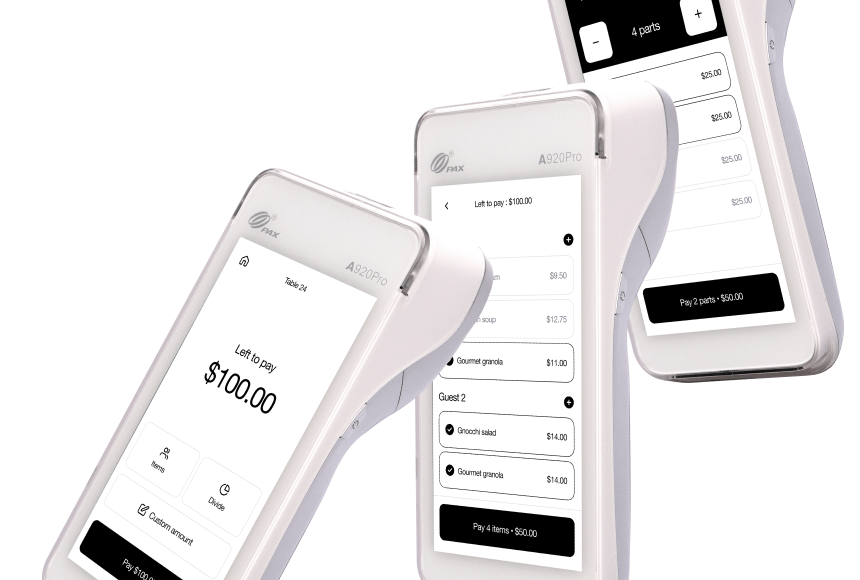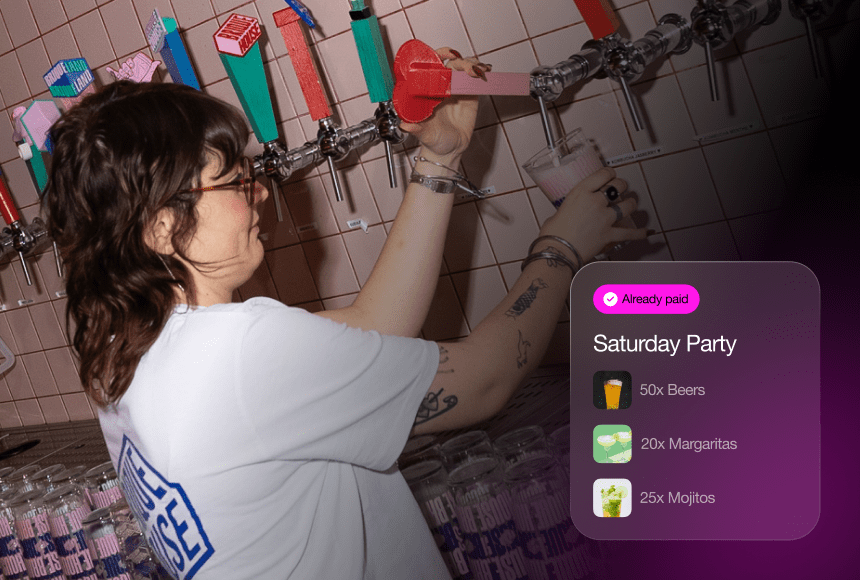
Transforming Digital Menus into Genuine Hospitality
The Rise of QR Code Ordering in US Restaurants
Pull up a seat, and let’s talk about the digital wave sweeping through the restaurant world. Over the last few years, QR code ordering has gone from a novel idea to a practical staple. With many restaurants embracing streamlined menus and contactless service, you can now walk into a cozy brunch spot or a farm-to-table bistro and find a small, scannable code waiting at the table. You hover your phone’s camera over it, and voilà—a full menu, ordering capabilities, payment options, and sometimes even links to share on social media or to leave a review.
According to a study by eMarketer, QR code usage has surged in the US, with millions of smartphone users embracing it for ordering and payment. While this new technology offers convenience, it can also feel impersonal if not handled right. After all, restaurants thrive on relationships—loyal customers return for both the delicious bites and the familiar faces. The warmth. The personal touch.
So how can you retain that personal, human connection when your menu and ordering process go digital? Spoiler alert: It is possible to preserve, and even enhance, the heart of hospitality, all while optimizing operations.
Why Personalization Matters in a Digital Setting
Hospitality has always been synonymous with caring, empathy, and connection. When guests walk in, they like to feel noticed. Every restaurant owner understands that experience is everything—who doesn’t relish a warm welcome, a quick conversation, and a friendly smile? But, in an era where the smartphone is king and QR codes are quickly taking center stage, the physical distance between the server and the guest can feel wider than it really is.
This appears contradictory at first: how can scanning a code possibly replace that personal greeting from a server? Yet, what if you look at QR code ordering as a tool to improve personalization rather than diminish it? By letting technology handle certain tasks (like providing comprehensive menu details or collecting orders efficiently), your staff gains freedom to engage on a more meaningful level. They can focus their energy on recommending a perfect wine pairing or sharing the story behind your signature dish.
Digitally, you can also tailor your guests’ journey through carefully curated menu listings, highlighting dietary preferences and offering suggestions that suit specific tastes. In many ways, personalization through technology can be just as warm as that first hello from your favorite neighborhood server—if not warmer, when done right.
Creating a Warm Welcome: First Impressions Count
Human connection begins the instant your patrons walk through the door. That’s the moment to set a welcoming tone, even if they’ll be scanning a code at their table. Consider these steps to ensure a sincere, personal experience from the get-go:
- Friendly Greetings: Train your staff to greet customers warmly and let them know how your QR code system works. Guests might not be familiar with the process, so a short explanation is invaluable.
- Visible, Inviting Signage: Make sure your “Scan Here” signs are more than just signs. They can include a short, friendly message or a cute illustration that reflects your restaurant’s personality.
- Offer Assistance: Some folks might be hesitant to use their phone for ordering. Encourage your staff to offer help scanning the code and, if needed, run through a quick demonstration. This small gesture goes a long way to keep things personal and stress-free.
An essential element here is balancing modern technology with old-fashioned hospitality. Your servers remain key players, offering to answer questions and making menu suggestions, but let the QR code do the heavy lifting for routine tasks.
Designing a User-Friendly Digital Menu
A digital menu is the face of your restaurant in an online space. The arrangement, naming, and presentation matter just as much as the layout of the printed menu you might have stored away. Ensuring that your QR code leads to a well-designed menu is crucial in making guests feel appreciated rather than alienated. Here are some guiding principles:
- Clarity Over Complexity: Keep your menu organized into categories (Appetizers, Entrées, Desserts, Specials, etc.) so guests can quickly navigate from one section to another.
- Enticing Descriptions: Describe your dishes in a way that highlights their unique flavors and your restaurant’s flair. Instead of “Battered Cod with Fries,” go with something more evocative like, “Crispy Atlantic Cod with Hand-Cut Truffle Fries.”
- High-Quality Images: A picture can go a long way in tempting hungry patrons. But be sure images are professional and load quickly. Overly large or slow-loading images can be frustrating.
- Allergens & Dietary Options: Nothing says “We see you” like clearly labeled gluten-free, vegetarian, or vegan options. This not only helps diners with dietary restrictions but also shows you care.
By paying attention to design, each guest who scans a QR code should feel rewarded with a user-friendly, visually pleasing encounter—rather than a confusing labyrinth of pages. It’s no secret that visual appeal can enhance your guests’ comfort and willingness to explore more items on the menu.
Engaging Customers with Interactive Touches
Your digital menu doesn’t need to be static. You can insert interactive elements to make customers want to linger. Think of it like adding just the right seasoning to your signature dish: it transforms something good into something delightful. A few suggestions:
- Embedded Videos: Short clips of your chef plating the dish or explaining the sources of ingredients can humanize your brand and elevate the dining experience. Imagine scanning a code and seeing your chef greet customers with a brief walk-through of daily specials.
- Flavor Pairing Tools: Guide guests to a recommended cocktail or wine match after they pick a main course. With the right digital integration, you can program pairing suggestions for each entrée.
- Interactive Polls or Quizzes: Add a mini quiz that helps users decide which dessert best fits their sweet tooth. Or let them answer a quick poll about your new seasonal dishes. Playful touches like these create memorable customer engagement.
In this way, the QR code menu is no longer just a static list. It becomes a gateway to an experience. Guests learn about your ethos, their curiosity about the backstory behind each dish grows, and they have fun in the process. Genuine excitement for your food fosters loyalty and encourages them to recommend your place to others.
Training Your Staff to Enhance Guest Connections
QR code ordering doesn’t replace your staff’s personality; it amplifies it. By removing some tasks—like taking orders for each individual at a busy table—technology frees up your team to connect with customers more personally. Here’s how to make it more intentional:
- Teach Staff the Basics of Tech Support: Even though your system might be user-friendly, some guests will still need help. Servers should be able to quickly demonstrate how to access the menu, place orders, or modify them. A calm, reassuring presence can prevent a minor tech glitch from ruining the experience.
- Recommend Over Reprimand: Staff can still give thoughtful suggestions. If a patron seems torn between two entrées, the server can jump in with a personal anecdote: “I love them both, but the pan-seared salmon is perfect if you want a lighter option.” That’s the sort of personal detail a list of items can’t provide on its own.
- Read the Room: If your staff sees a guest struggling to navigate the menu, they shouldn’t wait for the guest to wave them down. A polite check-in can turn potential frustration into an opportunity for positive engagement.
Remember, the main consideration is, and always will be, hospitality. Even in the era of digital ordering, customers value eye contact, friendly conversation, and the smile of an attentive server.
Encouraging Feedback and Community
At its best, dining out is a communal experience, and that community can extend beyond your four walls—especially in the digital age. Since many QR code ordering solutions also integrate tipping, loyalty programs, or online reviews, you have ample opportunities to keep the conversation going.
For instance, you could show a “Thank you for visiting!” message after someone completes a payment. That message might include:
- Polite Prompt for a Google Review: In the US, online reviews can make a significant impact on a restaurant’s reputation. If your QR code system allows direct links for reviews, politely invite guests to share their thoughts. Let them know you appreciate their feedback and read every comment. That genuine care can inspire more positive posts.
- Social Media Invitations: Encourage diners to share a photo of their meal on Instagram or Facebook if they loved it. You can even feature a branded hashtag. People enjoy highlighting a memorable meal, and that brand awareness can ripple out into their social networks.
- Loyalty Incentives: Some digital ordering platforms—like sunday—can help you integrate loyalty rewards directly, so if a guest visits frequently, you can automatically offer them certain perks or discounts. A small nudge like “Your next latte is on us!” can be a difference-maker for retaining loyal customers.
The key is to use technology to extend warmth, not to bombard people with forced marketing. Allow your genuine appreciation to shine through, and you’ll transform occasional customers into a real community of brand advocates.
Overcoming Common Hurdles
Of course, no successful innovation comes without a few challenges. By anticipating these hurdles, you can ensure that your restaurant’s QR code ordering experience remains a cut above the rest.
Let’s check out a few common stumbling blocks:
- Connectivity Issues: If your restaurant’s Wi-Fi is unreliable, customers may struggle to load the digital menu. Always maintain robust internet coverage. Consider having a backup method, such as a printed menu or a staff-operated tablet, for those moments when technology stumbles.
- Guest Hesitation: Some diners love the tradition of ordering directly with a server, or they might be uncomfortable with digital platforms. Balance is everything: keep servers on hand to assist or to take orders in a more traditional manner for those who request it.
- System Glitches: Even the smoothest software can experience downtime. Have a plan for updating or rebooting your system during off-peak hours, and train staff to handle unexpected technical hiccups gracefully, without frustration.
- User Privacy Concerns: Be open about what information you collect and how you use it. Make sure guests understand their data isn’t shared or sold and is only used to enhance their experience.
When you address these concerns head-on, you earn your diners’ trust. Transparency, strong communication, and having backup scenarios can keep your restaurant from falling into a digital sinkhole.
Case Study: Maple & Pine Gastropub’s Success Story
To illustrate how these principles can come together, let’s look at Maple & Pine, a modest gastropub in a bustling suburban area. They were facing an age-old problem: during weekends, staff were overwhelmed taking orders, leaving less time for personalized conversations with guests. Management decided to implement QR code ordering to streamline the day-to-day operation.
Instead of simply introducing the tool and calling it a day, they made a concerted effort to ensure their digital menu invoked the same warmth and personality as their brand. They commissioned bright, relevant photos for each dish, wrote fun descriptions, and added a short blurb about locally sourced ingredients. Servers were given in-depth training on how to guide customers through the scanning and ordering process.
When a guest completed an order, the payment interface offered them an option to leave a tip and post a review on Google. It also suggested a neat pairing for their next visit: “Try our new hazelnut cappuccino for a perfect brunch vibe!”
The results? Maple & Pine reported a 20% jump in guest satisfaction ratings within three months. They also saw an increase in staff tips because satisfied customers recognized the extra attention they received when servers weren’t bogged down in manual order-taking. Moreover, they spied a spike in their Google review count—a crucial factor in attracting first-time visitors.
The Subtle Role of Payment
When you consider the entire dining experience, payment is often the last stage. It should remain as seamless, or even more so, than the rest of the visit. Through QR code platforms, you can shrink the time spent flagging down a server to retrieve the check and waiting for a card reader, which in turn leaves more time for real conversation.
For example, solutions like sunday let you embed a customized pay link right in your digital menu flow. Guests can settle the bill at their own pace, split checks if they like, and even add a tip with a few taps on their phone. This might sound small, but it significantly relieves friction at the end of the meal. Freed from running cards back and forth, staff can check in on the guest’s overall satisfaction, ask if they enjoyed the final dish, or see if they have any dietary suggestions for next time. That last moment can leave a strong, positive impression—making them want to return.
Practical Tips to Add a Personal Touch
If you’ve decided it’s time to introduce or refine QR code ordering at your establishment, consider a few more practical pointers to take your personalization game above and beyond:
- Welcome Message on the Landing Page: When customers scan the code, greet them with a short introduction, perhaps featuring a rotating photo of your best-selling dish. Something like: “Welcome to Blue Harbor Seafood! Prepare to dive into coastal flavors made fresh every day.”
- Storytelling Elements: If you source your produce locally, or your coffee beans come from a family farm in Guatemala, let people know. Sharing your story can forge a meaningful connection.
- Highlight Staff Picks: Dedicate a small section for “Chef’s Specials” or “Team Favorites.” It’s a simple way to humanize your digital menu: “Alice from our front-of-house team is absolutely in love with the lemon ricotta pancakes.”
- Offer Table-Specific Customization: For special events or themed nights, tailor the landing page with a greeting that matches the occasion: “Happy Valentine’s Day! We’ve prepared a special treat for you.”
Emphasize your brand’s warmth and character at every step. A digital ordering system doesn’t have to feel like an “app store” experience. It’s an extension of you—a digital handshake with your community.
Table: A Quick Comparison—Standard QR vs. Personalized QR
| Standard QR Code Ordering | Personalized QR Code Ordering | |
|---|---|---|
| Menu Layout | Static, text-heavy list of items | Visually appealing categories, dish photos, helpful descriptions |
| Communication Style | Minimal or no direct messages | Friendly greetings, staff picks, brief brand story |
| Customer Engagement | No onboarding or interactive features | Quick demos offered, quizzes, recommended pairings |
| Feedback Loop | Payment only, no tip or review prompts | Tip options, direct Google review links, loyalty incentives |
This simple breakdown showcases how investing in a personalized approach can elevate your guest’s perception of digital ordering. Instead of being a mere utility, your QR code becomes part of a memorable, enjoyable restaurant journey.
Serving a Lasting Impression: Move from Transactional to Indelible
In a world that seems increasingly automated, your greatest competitive advantage can be showing that there’s a warm heart behind the screen. Embracing QR code ordering is just one part of an overall strategy that sees both technology and human connection as partners. When used thoughtfully, these tools spare your staff from mechanical tasks and equip your diners with extra convenience, ultimately leaving more room for genuine, face-to-face hospitality.
That’s the secret sauce: weaving technology into your restaurant’s personality. Give guests a reason to feel like they’re not just scanning a random code but stepping into a unique conversation with your brand.
Whether you run a hip taco spot or a French bistro, your approach can be as personal as the greeting from the host at the door. By creating a user-friendly digital menu, integrating small interactive delights, and training your staff to embrace both tradition and technology, you can keep diners returning—not just for the food, but for the experience of genuine human connection bolstered by modern convenience.
Frequently Asked Questions
How do I make sure the QR code is user-friendly for all age groups?
Clarity is key. Provide brief instructions near the code itself, showing how to open a smartphone’s camera and scan. Also, encourage your staff to offer support if they notice hesitation. Some older guests or those less comfortable with technology can appreciate a simple explanation.
Is QR code ordering suitable for fine-dining establishments?
Yes. Even upscale restaurants can adapt this approach. The difference lies in how the digital menu is presented. High-quality images, elegant layout, and consistent branding can enhance the experience. Your servers then have more time for deeper table-side interactions about wine pairings or dish origins.
Will going digital reduce my servers’ tips?
Most restaurants that implement QR ordering see no decline in tips—in fact, some report that tips increase. Digital systems, such as the one offered by sunday, often include clearly visible tipping options. Plus, when servers spend less time on busywork, they can focus on relationship-building, which encourages more generous tipping.
What if certain guests want a traditional menu?
Keep a small stack of physical menus available. This way, you accommodate those who prefer something tangible to hold. Make the digital option your mainstay, but don’t turn away a guest who’s simply not ready for the QR code approach.
How can I incorporate local flair into my QR code ordering?
Highlight local farms, breweries, or bakeries in your dish descriptions, and include a short background or photos in your digital menu. This boosts community pride and connects diners more closely to what’s on their plate. QR codes can link to short videos or blog posts introducing your partners, making the experience both educational and personal.
Find out more today
Drop us your details below and we’ll reach out within the next 24h



